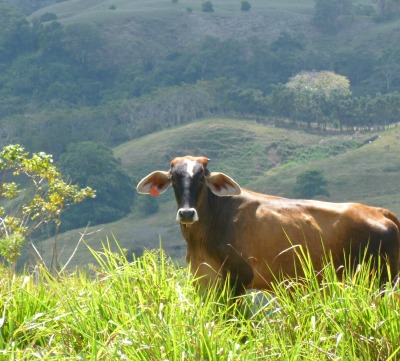
This property would appeal to someone who loves horses and a ranch lifestyle.
Also it is noticeably cooler up on this finca than down at sea level.
We have only recently listed this property. The adjacent ranch owner had wanted to buy it, but he recently informed us that he cannot swing it.
Find more photos and information on this finca here.
Please let me know if you have any questions.
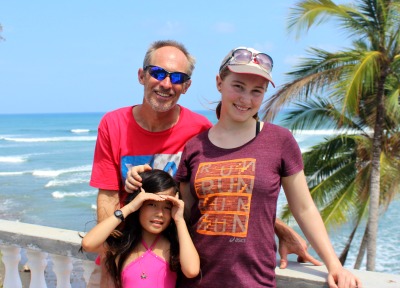
We were on our way to visit our friend Juancho at Mono Feliz.
Shawn and Shena were just putting the final touches on their surf/stand up paddle board camp.
It was spectacular. Shawn was out paddle boarding when we arrived. Shena was hanging out with their 2 kids.
We ended up staying for much longer than we intended. It was a very comfortable place and we all had a great time sitting around and chatting.
The aerial video below was taken of and around Burica Surf. It was taken before our visit. As you will see the main building is still under construction. The water and conditions look sweet.
[leadplayer_vid id="588EA3DE25B69"]
You can find various wave opportunities for both beginning and advanced surfers, as well as for beginning and expert stand up paddle (SUP) boarders. You can rent a board at Burica Surf for $20/day.
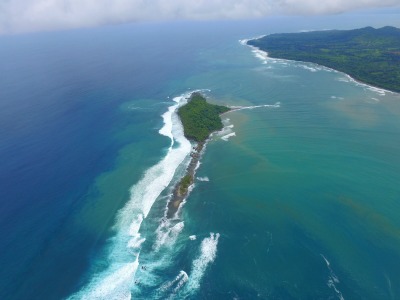
You can also paddle out to Burica Island (or Isla Burica) in about 25 minutes. It can be leisurely circumnavigated in an afternoon.
My husband has enjoyed surfing at Burica Island before and wrote about it.
Burica surf is at the very tip of Punta Burica. It is in a remote area with views of Burica island.
It is about a 1-1/2 hour drive from the beach town of Puerto Armuelles.
From Puerto Armuelles, every hour there are small buses to the village of Bella Vista. (These buses stop after 6pm.) Bella Vista is about 2.5 kilometers from Burica Surf. Which means it will take you about 30 minutes on foot or 15 minutes by car to get to Burica Surf from Bella Vista.
If you want, you can ask the Burica Surf folk to come and pick you up at the airport in David or in Paso Canoas. Paso Canoas is the town at the border between Panama and Costa Rica.
For detailed directions to get to Punta Burica & Burica Surf, visit our Punta Burica hotels page.
Now the accommodations are even nicer than when we visited. Check out the photo below of their main building. I downloaded it off their website, buricasurf.com.
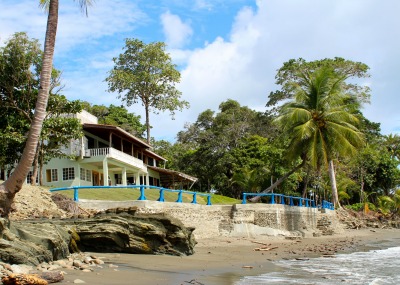
Rooms
Lodgings at Burica Surf are rustic, yet comfortable.
There is no electricity or Internet. Which means it really is a wonderful nature retreat without distractions.
They have 4 rooms and 3 dorms.

Food
Meals are available for purchase. It is only $30 a day (3 meals).
All meals are served in a “family” style in the upstairs dining area overlooking the surf breaks.
To reserve your accommodations, you must pay a 50% deposit.
You can cancel your reservation within 24 hours of booking your accommodations.
They offer group rate and package deals.
Electronic bank transfer, Pay Pal, and cash (USD).
You are welcome to show up without a reservation, but then they can only accept a cash payment. (Remember there is no internet or electricity at Burica Surf)
You can find out more, including their contact information, at their website: BuricaSurf.com.
If you make it out there I'm pretty sure you will have a fun and relaxing time.
As Shawn says, "There's always something to ride!"
Please let me know how you liked your visit there. Comment below.
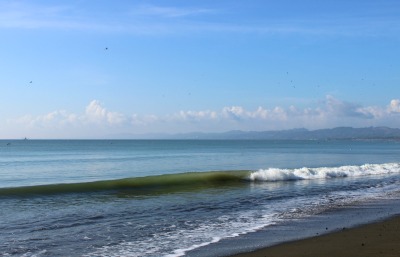
Jan. 26, 2017
On my very first morning, I went to the beach at Corazon de Jesus on for a swim.
I had been told that the November rains were heavy this year and that there was still a lot of drift wood on the beach. However, to my eyes it looked pristine and beautiful.
I had been away for over three months this trip. I had been spending my days in a very cold, grey, and rainy Seattle, so I was not aware of anything other than a perfect morning at the beach.
I was the only one out. The gentle curve of the beach was an empty crescent. Just the sand, nearly mirror flat, the early morning ocean, and I.
I took a short swim, which was plenty. (Note to self: I am really out of shape). But, man did I feel wonderful! The water was probably a warm 80 degrees, or so.
After swimming, I decided to go visit some of my neighbors on the beach.
There are several ex-pat residents in the Corazon de Jesus neighborhood. I was especially interested in talking to a couple of these folks who are doing construction on their homes using local contractors.
I enjoyed hearing about their experiences with the various contractors and sub-contractors. I will write about what I learned in a future post.
In the few days I've been back in Puerto Armuelles, I am noticed a number of new northern faces.
One woman, who had just ended a Panama relocation tour, made a special visit to Puerto. She said that she heard about Puerto Armuelles on our site, and wanted to check out for herself.
She says that she has "caught the Puerto bug". We’ll see if she decides to join us in Puerto soon.
Several of our visitors have visited Puerto more than once to “check it out” and are now expressing interest in buying. Most of our recent buyers are either from Canada or from northerly parts of the US.
A few folks have decided to rent homes in Puerto, rather than buying. Hopefully more rentals will continue to come on the market to meet this growing need for long-term rentals.
Some big news is that Del Monte may finally be coming to Puerto to start up banana production this June 2017. At least this is what the news media here tell us.
My most skeptical Panamanian neighbors here say they will only believe Del Monte is coming when they have peeled and eaten a Del Monte banana that was grown in the soils of Puerto Armuelles.
We all hope Del Monte really does come to Puerto. The town will benefit from the mostly working class jobs that Del Monte will provide.
However, as far as the arrival of ex-pats and any tourist industry here are concerned, I do not think that Del Monte will have much effect. I believe we have passed the “tipping point” and growing appeal of Puerto Armuelles to expats and Panamanians alike is certain. It is already happening.
But don’t believe me: Come visit and see for yourself. Who knows? You might “catch the Puerto bug” too.
You can learn more about Puerto Armuelles here.
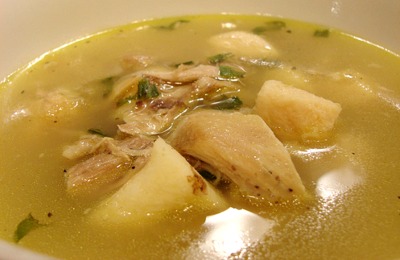
Many claim the soup is even the perfect tonic for a hangover.
A local Panama chef believes that culantro is the secret weapon for a good sancocho.
“Culantro is the flavor you’re going to find in sancocho, even more than the chicken." It’s our traditional dish. It’s the flavor of Panama.”
- local chef Francisco Castro.
Cook time: ~1.5 hours
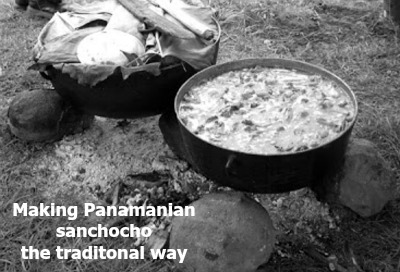
Serving Suggestions
To eat it the Panamanian way, serve it along with white rice on the side. You can either mix the rice into the soup or take a bite with each spoonful. It doesn’t matter, they do both.
Sometimes the soup is accompanied by patacones (fried plantains) as well.
The soup’s ingredients may vary , but almost all of Panama's Sancocho varieties share one characteristic: they are rarely spicy. Typically, Panamanians aren’t fond of spicy foods.

Don't worry, you can get your benefits reinstated. Start with an email, as I explain below.
Keep in mind, most people only need to submit this form every other year. (See submittal requirements below)
Do you receive benefits from the US Social Security Administration (SSA)? Then you were required to submit a Proof of Life form in 2016, if you meet any of the conditions below:
(note: If your SSN ends in 50 -99, you must submit the "Proof of Life" form in 2017, not 2016)
In May/June of each year these forms are sent to the mailing address you have on record with the SSA. A second request is mailed in October.
This is why it is important to keep your address updated with SSA.
If you were required to submit your proof of life form to SSA in 2016 but haven't, you should e-mail the Federal Benefits at [email protected] .
Ask for them to email you a "Proof of Life" form and instructions on how to get your benefits reinstated.
More Information
I have written more extensively on the required SSA Proof of Life form in a previous post.
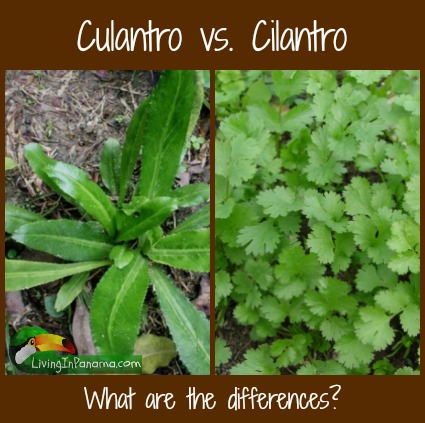
Culantro is used extensively in Panamanian food.
It is easy to find culantro in Panama, cilantro is harder to find.
I can almost always find culantro growing wild in small patches in my yard. It grows in both shade and sun. Sometimes they also sell it in the market and, I've recently been told, you can also sometimes find dried culantro in grocery stores here.
If you are looking for it in the US, Canada, or Europe, you may be able to find it in Asian or Hispanic markets (especially Vietnamese, Thai, Puerto Rican or Dominican Republic markets).
If you want to use cilantro in Panama, your best bet is to grow it yourself. Although, as you will read below, that is not an easy task.
Worldwide, culantro is known by many names: recao, long coriander, ngo-gai, spiritweed, black benny, recao de monte, false coriander, spiny coriander, among others.
Leaves
Cilantro leaves are small and lacy like parsley leaves.
Cilantro leaves grow on stems that are several inches above the ground.
Culantro leaves are long and spiny like dandelion leaves. It's leaves are also much tougher than cilantro leaves. They can grow up to 10 inches long.
Culantro leaves grow in whorls that form at the base of the plant.
Flowers & Propagation
Culantro's flower stalks also have spines. The spines on both the leaves and the stalks become quite sharp as the plant matures. The flower blooms at the top of what looks like a green straw.
This flower will produce seeds. These seed can be used to grow new plants, although, in Panama culantro is self-seeding. It can also be grown from cuttings. Culantro can grow in poor soil with little fertilizer. They are hardy, prefer partial shade, but tolerate full sun.
Cilantro flowers are white and lace-like on a long stem.
Cilantro is not a hardy plant, especially in the tropics. Cilantro is particularly hard to grow in the tropics since it doesn't love heat, but needs to grow in full sun. Cilantro can only be grown here in the cooler months. (For more on Panama climate)
Harvesting
I send my girls out to pick some culantro leaves when I need them. But if you lack children, you can pinch off or cut the leaves at the soil line with scissors.
Leave the newer leaves for use in future meals. Be careful of the spines when gathering the leaves.
Differences in Use
Because culantro has a much stronger flavor, it is usually added during the cooking process. If you want to put it in a salad, cut it into thin ribbons; otherwise use cilantro.
Culantro is a common ingredient in food in Panama. For instance, it is typically one of the main ingredients in a guiso (or sofrito), an aromatic blend of herbs and spices used to flavor many beans, fish, meats, rice and stew dishes.
Guiso. There are a lot of variations of guiso (also know as sofrito throughout latin america). In Panama it is usually called guiso and often consists of a blend of culantro leaves, onion, garlic, fresh tomatoes, and sometimes non-spicy small peppers . Conveniently, you can make it in advance and refrigerate or freeze it for later use.
Cilantro is more likely to be eaten raw in ceviche, salsas or as a garnish.
If you are going to live in Panama, culantro is a herb you will learn to love. Unless, you are like my younger daughter and detest anything that even hints at the taste of cilantro.
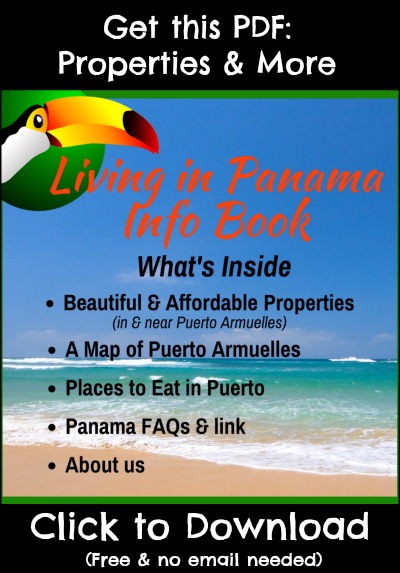
You will also find a map of Puerto Armuelles with photos on it too.
If you are looking at property, it is worth your time to check out these hand-picked properties.
If any of them spark your interest, feel free to call or email us with your questions or to schedule a tour.
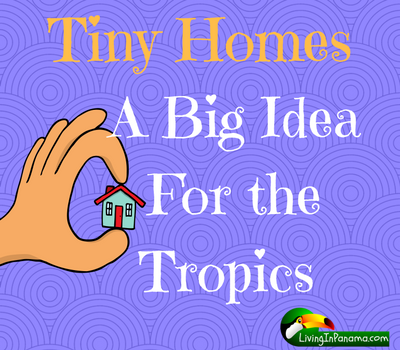
Ascetic monks from the 15th century and earlier have written about the spiritual benefits of casting off the extraneous luxuries of society and getting back to the bare necessities of life.
The ascetics felt that only without encumbrances and distractions is man truly able to achieve spiritual grounding. Only by practicing simple daily rituals can one enjoy a meaningful life.
Henry David Thoreau got back to basics at Walden Pond in Massachusetts in the 19th century and wrote extensively about the beauty and spirituality that filled his days. Thoreau was quite outspoken in his criticism of common “city dwellers” who were distracted by too much of everything. Of course, Thoreau who lived in the 1800s had no way to imagine the distractions that man would face by 2016. My wife Betsy is quick to point out that Thoreau was a frequent visitor of his mother’s home around mealtime, and that he sent his laundry out to be washed. (I guess it’s tough to be a perfect ascetic).
The early 19th century Irish Poet and academic William Butler Yeats spent many hours “living alone in a Bee loud Glade” in a tiny cottage on the Lake Isle of Innisfree in County Sligo. Many of his poems are situated at this, or other “sacred” natural places. Yet, he also taught writing at University in Sligo, and had a very complex life as a university administrator, husband, father, and community member. For Yeats, a simple thatch hut was a respite from the stresses of day to day living.
The current revival of the small, or “tiny” houses can be attributed in large part to the vast popularity of architect/writer Susan Susanka’s 1998 book “the Not-so-Big-House”. In her book, Susanka asks the basic question of “why does it need to be so big?”
After all, the average size of the North American family has been shrinking since World War II. Yet our houses have been steadily growing. In 1950, the average US home was 1000 square feet. In 1960, it had grown to 1200 square feet. By 1990 it was 2000 square feet. In 2016 the average new home built in the US was just over 2,400 square feet. The only nation in the world with larger homes is Australia where the average sized home built in 2016 was 2,500 square feet.
How did we evolve from a family of four in the 1960’s that fit into a 1200 square foot home, to a family of 2.5 that requires twice as much room? Are we happier now that we have all this room?
Most studies show that the overwhelming reason for the “super-sizing” of North American home has mostly to do with our ability to afford it. Simply put, North Americans have a lot more money than we had back in 1960. In a market driven society, all that money needs to be spent on something. Why not buy a bigger house?
The modern day iteration of the truly “tiny” house evolved from this rethinking of house size that followed on the heels of Susan Susanka’s best selling book. In fact, these days we even try to define what the limits are for each category of small house.
As I mentioned in a previous article, I have lived in a shipping container in Alaska for 2 summers. At 8’x40’ the 320 square foot container was the perfect “tiny man cave” for warming up and sleeping after a long, long day of commercial fishing. However, I would not consider this amount of space (especially the 8’ ceiling height which felt really low) to be a space that I would have appreciated in any other context.
Even my 262 square foot studio apartment in Seattle’s University District where I lived during graduate school, was much a more pleasant space.
This apartment had been carved out of the second floor hallway and a corner room of a hundred year old craftsman house. It had huge windows, and nearly 10’ ceilings. It was much smaller, but it was a perfect city apartment for a busy student on a budget. An added bonus was that my landlord really didn’t care what I did to my unit, as long as I asked first. So, I cut an interior opening between the kitchen and the bedroom to get a view and some daylight into the kitchen/desk alcove. I also installed a new shower and tiled the bathroom.
Rising Interest In Tiny Homes
With the insane rise in home prices in Seattle, and other similar cities, many people, especially the young and retirees on a budget are revisiting the Tiny home concept in order to continue living in the cities which they have come to love and appreciate. Not everyone has an extra $2000 to be able to rent a studio apartment. Many do not want to move out to the suburbs and spend their day commuting to and from the city.
There is a loophole in the maximum housing density law in Seattle which allows Tiny homes to be located on residential property, provided that the home is equipped with functional tires and a trailer hitch. In other words, these “homes” must fit on the roadway and be moved from the property from time to time (I am not sure how often). In other words, the Tiny homes allowed in Seattle are really more like wood framed trailers. As such, the sizes are quite standardized, in order to conform with the building codes as well as the transportation codes. Being so standardized is, from a design standpoint, pretty boring. Most Tiny Homes tend to look alike, sort of “cookie cutter” versions of one another, just with different window treatments, siding materials, and of course, interior finishes. However, the good news about this standardization of size and form is that these tiny houses can be factory built and delivered to your home site pretty much anywhere in the US.
We have had a few inquiries in recent months from folks who already live in Boquete, or in other highland areas of Chiriqui who are curious about what it would take for them to park a trailer, or mobile home on an affordable lot on or near the beach, to use for long weekends, so that they could get their “beach fix” without the having to stay in a hotel.
To my mind, the tiny house concept might be the perfect solution for those who just want a semi-permanent “camp” at the beach that is always waiting for them. I have not priced shipping containers lately, but I think that a shipping container base/secure storage locker could be used as the construction locker/storage unit for beach chairs, bar-b-q, surf boards, etc…so that there would be no risk of break-in in the event that one didn’t have anyone watching the property.
The tiny house, as a short-term accommodation is also a natural rental unit. Many short-term guests to the beach don’t have much luggage, no possessions, and they don’t need much space. Rentals in Puerto are still tough to find. As such, rental rates in Puerto are high. I think it is just a matter of time before some enterprising builder begins to produce tiny homes as rental houses. We have had a couple of calls from guys who have experience building pre-fab homes and tiny homes, already. It is not out of the question that we, ourselves, may build a tiny home or two on one of our properties, so that our clients will have a pleasant place to live while they explore Puerto Armuelles.
Our Ideal Tiny Home Is Bigger
After all our recent researches of tiny homes, Betsy and I are drawing the same conclusion that many others have arrived at before us. That is, Tiny Homes could be just the ticket as a weekend retreat, or a short-term rental. Tiny Homes seem like an amazing business opportunity.
However, when I consider designing a retirement home for my wife Betsy and myself, a small house feels better than a tiny one. I know that I would breathe a little freer in a slightly bigger space than the sub-400 square foot size which defines the truly “tiny” house.
If I had to throw out a number, my own personal ideal size dwelling for a single person would probably fall in the 600-800 square foot range. For a couple, I would think 800-1200 square feet would do well. This allows room for one to be alone for awhile to study, meditate, or practice a musical instrument, without disturbing one’s partner.
Living In Panama House
The Living in Panama House is probably not the final and “perfect” solution to the idea of living a big lifestyle in a small house in the tropics. However, it is the best that I have been able to come up with so far. Believe me, I have given this a lot of thought. I consider the Living in Panama House to represent an honest attempt at a “Not So Big Tropical House”.
As we have been refining the Living in Panama House design, our model has grown a bit, and shrunk a bit. But we keep coming back to about 500 square feet of finished, potentially air conditioned space. This “module which contains the two bedrooms, bath, and a small hallway, is all housed within the “umbrella” of a big sheltering roof. The three-bedroom model is about 650 square feet enclosed. The total square footage of the first model home (two or three bedrooms) is approximately 1,500 square feet.
The Living in Panama house is a bit bigger than my ideal house size for North America, because we think that it is beneficial to have a bit more covered space in the tropics to allow one to enjoy an open, breezy feeling, since it can get hot here. Also, we have more “hang out” time in Puerto Armuelles than we have in Seattle where one just doesn’t have much time to enjoy being at home. So, we end up using our house more here. Betsy and I will undoubtedly adjust the size of the Living in Panama House up or down over time, depending upon feedback we get from clients.
Tiny Home Builders Wanted
If you have any interest in building tiny homes in Puerto Armuelles, we would be happy to help you get started. Drop us a line. There is certainly room for competition in our untapped housing market.
Jan 1, 2017
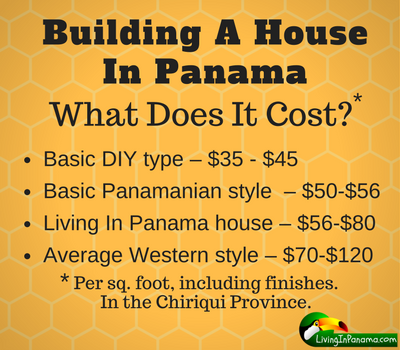
“How much does it cost/square foot to build a house in Puerto Armuelles?”
The answer depends upon what kind, size, and quality of house you are building.
If you build a fancy house, with lots of expensive materials (expensive windows, doors, custom fixtures, etc.) it will cost a lot more than a very basic house. It won’t cost just 10%, or 20% more. Building a fancy house can cost 2 to 10 times more than a very basic house.
In Seattle, circa 2016, building a basic house costs about $200 per square foot. A house with expensive finishes can cost $250 to $500 per square foot (I am not kidding). And it goes up from there. An architect-designed, custom timber-framed, Japanese tea house or fancy outdoor sauna building on the lake could cost over $1000 per square foot
In Puerto Armuelles the answer is the same: it depends upon what kind of house you are building.
Fancy Houses
On the high end, there are wealthy expats who have had homes built on the beach by local contractors. They can easily spend $100/sq ft and more. This does not include the cost of the land.
More Basic Houses
On the other hand, in Puerto Armuelles we have several expats who have been their own contractor and have also done a lot of the work themselves. These folks have completed their projects for under $35/sq ft. Granted some of these homes lack much of a design concept since the owner-builders had not built before. However, the owner/builders appear quite pleased with the results.
I have done a brief survey of costs recently. I took into account my conversations with builders and owners. (As I drive around the Chiriquí province, I often stop by construction sites to chat.) I have also done the usual online research that is available to all of us. Based on these sources, I have concluded the cost figures below.
Cost per Sq. Ft Range
As I read the descriptions of the different grades or qualities of construction available at the various price points, one thing is quite familiar. Just as in the US, the big difference in the cost of construction is in the finishes.
Finishes include:
The finishes vary greatly in price. The cost per square foot for the structure of the house does not vary nearly as much as it does for the finishes.
People understandably want to know how much it will cost to build a house in Panama.
The Living In Panama House has the advantage of being designed by an architect specifically for Panama's tropical climate.
The Living in Panama house is an entire “rethink” of the concept of “home” in the tropics. The Living In Panama house is mostly an open-air living concept. This open-air structure, with just a portion totally enclosed, means that only a small section of the house requires the full complement of finishes. With this type of design, you eliminate the need to pay for extra windows, doors, air conditioners, insulation, or cabinetry. Not that you don’t have those finishes, but fewer of them are needed.
Because of this savings, the Living in Panama House, can be built, including finishes, for between $56 and $80 per square foot. This is a huge saving.
The structure of the house, without finishes, costs an estimate of $30 per square foot for the 2 bedroom model and an estimate of $38 per square foot for the 3 bedroom model.
The cost of building anywhere in Panama varies. The biggest variable is your choice of finishes.
Summary of cost/square foot (including finishes)
I hope this helps to answer this popular question.
We have written about remodeling, various construction materials, and alternative housing types. Click on any of the links below to read an article.
Please share your experiences with the cost of building a house in Panama. Use the comment section below. Thank you.